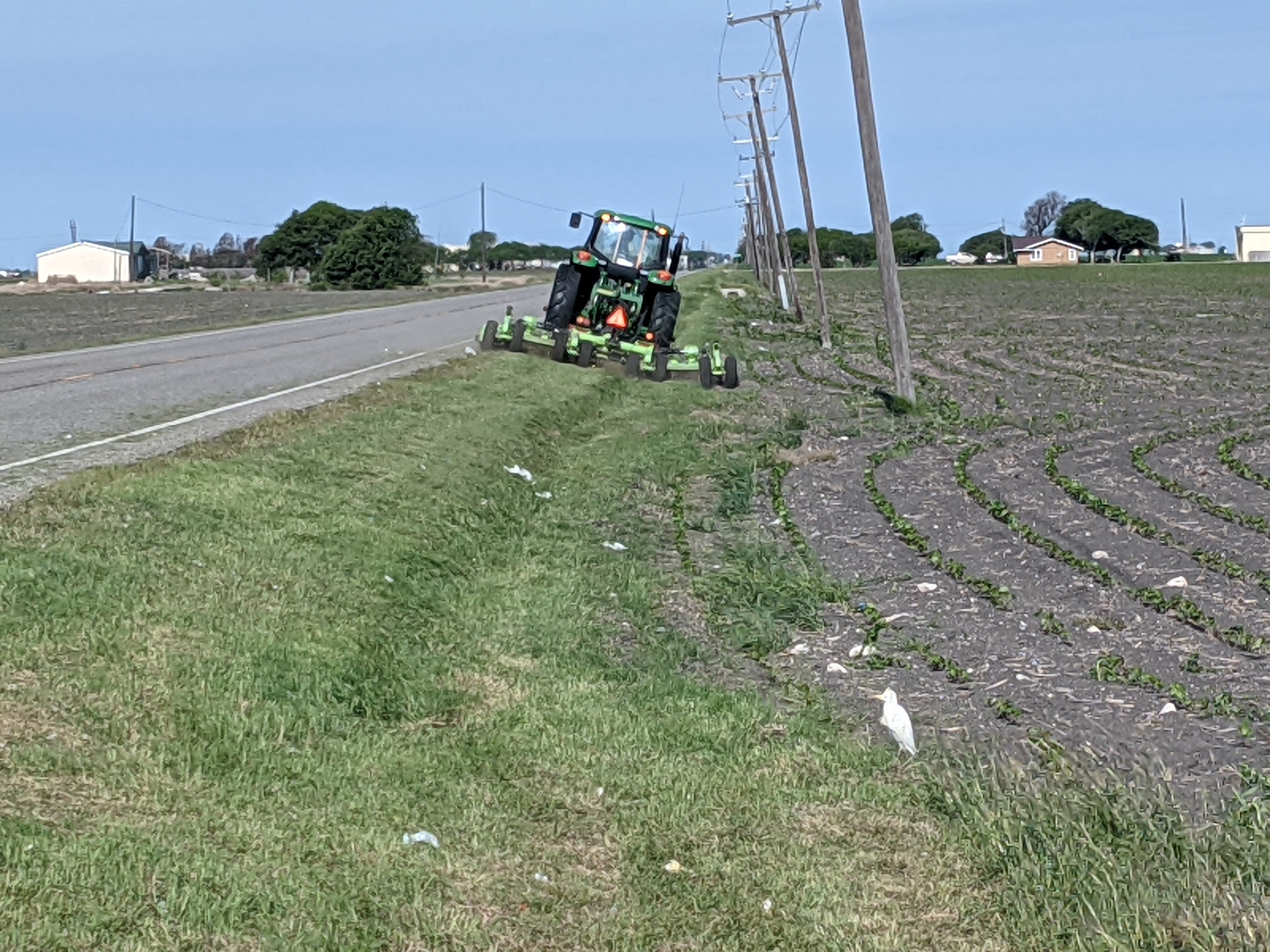No Mow May: A Wonderful First Step by Shaun McCoshum, PhD, Senior Ecologist, guest author
Although No Mow May might let flowers grow, many landowners will simply have taller grass especially in treated lawns

Published April day, 2025
It is that time of year again, where posts flood social media promoting No Mow May in order to help wildlife. Soon to follow will be people posting opinions and memes saying the program is terrible and bad for wildlife. As with most things in ecology, it is more nebulous than a simple good and bad. So, should you avoid mowing in May? The short answer is probably yes – but there is more to this movement to understand. It is important to know that No Mow May started in England where many North American lawn-weeds are native, and spring is in full swing in May. The program was developed to combat harmful lawn standards of heavily mowed monocultures that so many people are taught are beautiful. This needs to be repeated. No Mow May is a social movement to combat the harmful lawn standards that remove flowers and plant diversity. Additionally, the program was intended to help provide forage for emerging pollinators and insects in the UK. It is important to understand that No Mow May focuses on the month of May because in England most of the country experiences spring in that month. In North America, spring weather starts in February in the southern latitudes while areas in the north (and higher elevations) can experience late snowstorms in May. So, although No Mow May has the potential to engage landowners in North America with lawn alternatives, the other intended effects of helping emerging insects won’t be as impactful in areas already experiencing summer weather.
A lawn to meadow project after four years. An ideal outcome for No Mow May, but this is not the result of simply not mowing. It was an active lawn replacement

In North America, the same problems exist around lawns. Even in places where folks are not treating their lawns with herbicides and pesticides, many land-owners simply mow more area than is necessary. Worse is that areas that are mowed are cut with the blade height set too low for most nectar producing plants. By promoting No Mow May, we have the opportunity to inform our neighbors, agencies, and audiences who aren’t already aware that lawns or any heavily mowed and treated areas (like parks and roadsides) are bad for the environment while educating them about the needs of wildlife. Once lawn-lovers are engaged through No Mow May, the goal is that they will be more amenable to using less chemicals on their lawn, allow for more flowers to grow in their mowed areas, and possibly even take actions to reduce or remove their lawns and create wildlife friendly gardens and habitat. At the very least, it will help folks see plant diversity as the norm, rather than their ecologically barren lawns as the status quo.
By letting lawns grow out in spring, many wildflowers can appear, including violets, clovers, flowering bluets, or spring beauties, depending on the region. The next step here is to have landowners appreciate these flowers and encourage their growth within their yard. We can ask newcomers if they saw butterflies or native bees, and whether or not they enjoyed seeing the flowers and wildlife. When answers are positive, folks are more amenable to conversations about planting colorful native flowers, creating habitat, and possibly replacing non-native plants with natives. There are wonderful resources that are already developed to help folks with their journey, like Pollinator Partnership’s (P2) Creating a Pollinator Garden, and [the author’s] Inviting Pollinators and Other Wildlife Into Your Garden; resources informing on what to plant include P2’s ecoregional planting guides and garden recipe cards; programs such as Bee Friendly Gardening provide a community to support you along the way. Most importantly, when landowners join No Mow May and appreciate seeing more flowers and pollinators, we must explain how overuse of pesticides is causing their disappearance. Even if our neighbors want a large lawn, maybe we can at least get them to stop using pesticides that are killing our wildlife.
Large mowers are often used to maintain roadsides. Although low vegetation near the road is safer, wider shoulders can accommodate taller pollinator habitat. Local agencies are a great target for folks to try and partner with for No Mow May

While there are many positives to this program, there are also downsides to No Mow May. Some landowners will never move beyond this first step. The folks that join No Mow May are creating more attractive habitats for some wildlife which might be cut down in June. This means nests, territories, and even the organisms themselves can be destroyed by mowers. Killing wildlife is the exact opposite of the program goals which has led to some valid critiques. It does not help that No Mow May messaging (a hands-off approach) often fails to engage with the next steps – actively creating native habitat. However, when the public is inundated with lawn care commercials and status quo symbols that harm our wildlife, No Mow May is a useful tool. When followed up with further engagement and explanation to create more pollinator and wildlife habitat, the program is often successful at meeting its goals. So, if you are wondering if you should join in on No Mow May, the answer is it is a great starting point to dive into pollinator gardening, but should be only your first step.
Join Bee Friendly Gardening for inspiration on what to do next, and happy gardening!
All photos by Shaun McCoshum. If you have any questions or comments for the author, please contact mccoshsm@gmail.com.